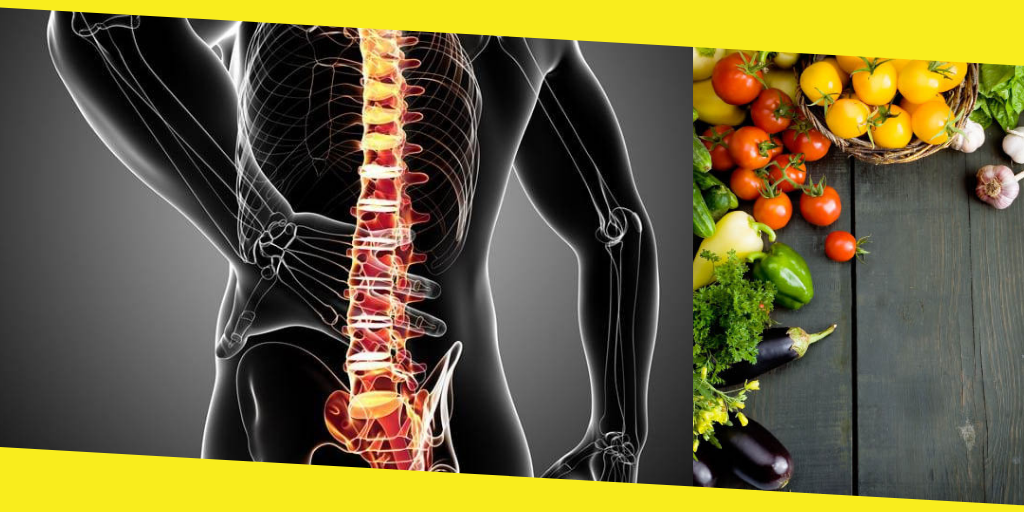Alterations to Your Diet to Aid Musculoskeletal Pain

A lot of people suffer from musculoskeletal problems. In fact, there are over 10,000 GP consultations in the UK each year for musculoskeletal problems. For some, these issues can lead to long term chronic pain conditions. Common conditions that fall into this category include osteoporosis, back pain, and osteoarthritis. Although these conditions may never be fully cured, there are some things that can help such as medication and gentle exercise. And when it comes to diet, what changes can reduce musculoskeletal pain?
Contents
ToggleFoods rich in protein
For cases of chronic pain, diets that are high in protein are recommended. According to one paper, four reasons for this are:
- The body’s pain relievers derive from proteins — Amino acids make their way into the bloodstream through the intestine (where what you eat is absorbed). They then act as building blocks for compounds that help with pain relief.
- Muscle–cartilage needs protein to grow — Amino acids are needed to build muscle which can go on to protect your bones and build strength.
- The activation of glucagon — Glucagon increases blood glucose levels and blocks glucose storage as fat. This can prevent a rise in insulin levels, carbohydrate cravings, and pain flares.
- Decreasing inflammation — Protein containing foods such as fish and green vegetables contain anti-inflammatory properties, lowering experiences of pain.
How do you implement a generous amount of protein into your diet? Add foods such as beef, fish, and eggs to your plate to up your protein intake. For vegan diets, make sure you’re eating enough pulses (lentil, beans, and soya products). There are protein supplements out there too in the form of drinks and snack bars.
Keeping tabs on calorie and carb intake
Choosing to eat a lot of unhealthy foods is a sure fine way to increase your calorie intake. This can then lead to excess weight carried around the waist and obesity — both of which can make musculoskeletal pain worse. This is due to extra pressure on joints and inflammation.
What is inflammation? Generally speaking it’s a localised condition in which part of the body becomes reddened and painful in reaction to an injury or infection. But, there are cases when inflammation doesn’t shut down — this becomes chronic inflammation. It is this which is the underlying cause of many diseases, health problems, and pain.
In addition to an abundance of calories, refined carbohydrates, saturated fats, and trans fats can cause inflammation too.
Keeping on top of calories intake and eating the appropriate amount can therefore lead to weight maintenance or weight reduction which could help musculoskeletal issues. In fact, one study found that weight reduction of more than 10% has the potential to lead to important changes in pain and function.
Omega-3 fatty acids
Our bodies unfortunately don’t produce this, so we have to source it from our diets, as they’re essential to our health.
In particular, research has shown that high doses of omega-3 can provide some relief from painful arthritis conditions. Again, this is an anti-inflammatory which deals with the issues mentioned earlier.
What foods contain Omega-3? Omega-3 can be found in oily fish (such as salmon and tuna), calamari, olive oil, and some plants and nuts. A mixture of these things should ensure that you’re getting enough of the fatty acid.
Making sure you have enough vitamins
Ensuring our diets have the necessary amount of vitamins is an important requirement for everyone— they each have their own benefits that keep us healthy. But some musculoskeletal conditions are a result of vitamin deficiencies, and certain vitamins can keep pain at bay.
Vitamin D provides us with the calcium we need to ensure bones, teeth and muscles are growing at their normal rate.. Eggs are a great source of vitamin D and are easy to incorporate into your diet. Another way to up your intake is with safe levels of sun exposure.
Vitamin K plays a large part in cartilage metabolism and is a promoter of cell survival — both important processes in the body that can prevent musculoskeletal issues. Get your intake of vitamin K through green leafy vegetables such as lettuce, spinach and beans.
Vitamin B helps keep the body’s nerve and blood cells healthy and helps make DNA, the genetic material in all cells. High levels of this could be linked to lower bone density and therefore musculoskeletal issues. Increase your intake of vitamin B through chicken, turkey, fish, oats, and more.
There are many more ways that your diet can reduce musculoskeletal pain. Always speak to your GP and nutritionist before changing your diet and for more advice on how the foods you eat can ease chronic pains.
Sources
- https://www.practicalpainmanagement.com/treatments/complementary/diet-patients-chronic-pain
- http://blog.arthritis.org/living-with-arthritis/omega-3-fatty-acids-arthritis/
- https://eatlove.live/foods-for-musculoskeletal-health/
- https://www.avogel.co.uk/health/muscles-joints/foods-that-make-muscle-and-joint-pain-worse/
- https://mettlercenter.com/can-diet-improve-chronic-pain
- https://www.tandfonline.com/doi/abs/10.3109/10582452.2014.951818
- https://bmcmusculoskeletdisord.biomedcentral.com/articles/10.1186/1471-2474-16-S1-S7
- http://handinjuries.com.au/index.php/blog1/entry/omega-three-fatty-acids
- https://www.arthritisresearchuk.org/health-professionals-and-students/learning-zone/widespread-musculoskeletal-pain.aspx
Recommended For You
Check Out The Reasons Why People Yawn Too Much
Most Inside
Most Inside offers high-quality recommendations and valuable updates to enhance all aspects of your life, providing premium guidance and enriching experiences.




